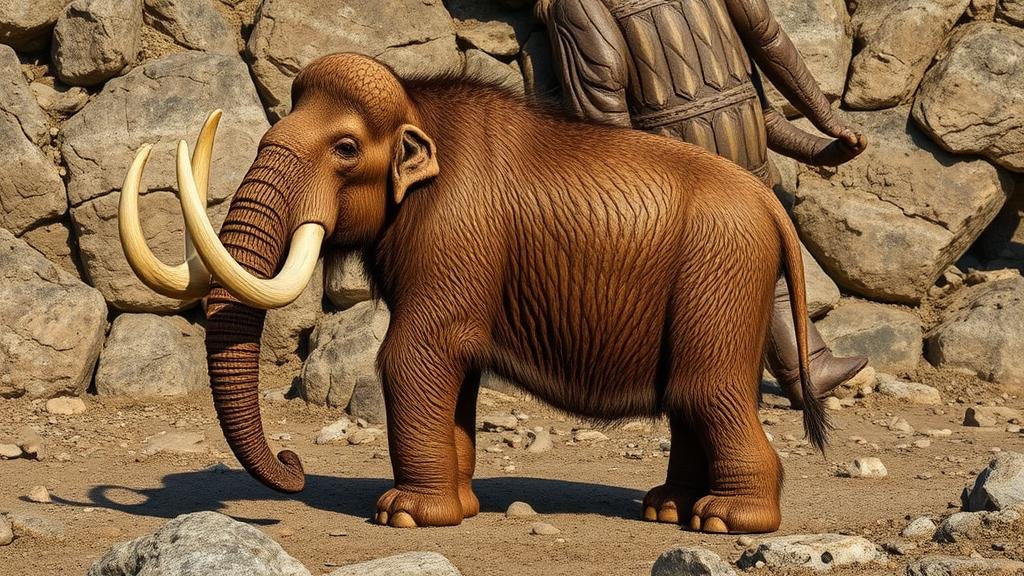Mammoth Graveyards: Fossilized Giants in Ice Age Sediments
Mammoth Graveyards: Fossilized Giants in Ice Age Sediments
The study of mammoth graveyards has captivated the curiosity of rockhounds and mineral collectors alike. These fascinating sites not only provide insight into the Ice Age ecosystems but also present unique opportunities for collecting fossils and understanding prehistoric life. This article delves into the significance of mammoth graveyards, the processes involved in their formation, and practical tips for fossil collectors eager to explore these ancient remnants.
Understanding Mammoth Graveyards
Mammoth graveyards are significant deposits of mammoth remains, often found in sedimentary layers that date back to the Pleistocene epoch, roughly 2.6 million to 11,700 years ago. e sites typically consist of multiple individuals, providing a glimpse into the social structures and behaviors of these remarkable creatures. Mammoths were herbivorous giants, with adult males weighing between 5,000 to 12,000 pounds and standing up to 13 feet tall.
Most graveyards are located in regions that were once covered by ice sheets, such as Siberia, Alaska, and parts of Canada. The preservation conditions in these cold climates have allowed for the emergence of incredibly well-preserved specimens, often encased in permafrost. This has resulted in not only skeletal remains but also intact tissue, hair, and even stomach contents, offering invaluable insights into the mammoths diet and environment.
The Formation of Mammoth Graveyards
The formation of mammoth graveyards is influenced by various natural processes. After a mammoth died, its remains could be transported by water and sediments, ultimately settling in low-lying areas or riverbeds. In some cases, mass mortality events could occur due to environmental stressors such as drought, extreme cold, or predation, leading to multiple individuals being buried in close proximity.
- Natural Catastrophes: Events like floods or volcanic eruptions can simultaneously affect large populations, leading to collective burial.
- Ice Cover: The rapid onset of glaciation allowed for quick preservation as ice and snow buried the carcasses, creating unique anaerobic conditions.
Examples of Notable Mammoth Graveyards
There are several prominent mammoth graveyards that have been excavated and studied, each offering a wealth of information:
- Woolly Mammoth Graveyard, Siberia: Discovered in 1901, this site has provided over 50 well-preserved mammoth remains, many of which have been used to reconstruct mammoth biology and lifestyle.
- Shawnee Mammoth Site, Illinois: This site contains the remains of at least 12 mammoths currently buried under six to eight feet of sediment, revealing potential herd behavior.
Fossil Collecting: Tips and Techniques
For rockhounds and fossil collectors interested in mammoth remains, specific techniques can enhance the experience of collecting fossils while ensuring ethical practices:
- Research Locations: Familiarize yourself with regions known for mammoth graveyards. Areas like Alaska and Siberia are prime spots, though local regulations should always be checked.
- Equip Yourself: Having the right tools is essential. Bring brushes, small chisels, and bags for safe transport of any discovered fossils.
- Join Guided Tours: Participating in organized expeditions can provide expert knowledge and access to sites that may otherwise be restricted.
- Understand Legalities: Respect local laws regarding fossil collecting. Some sites are protected, and removing fossils may be illegal.
Scientific Significance and Community Engagement
The study of mammoth graveyards offers more than just opportunities for collecting; it plays a critical role in understanding climate change, extinction events, and prehistoric ecology. Engaging with local universities or museums can provide access to resources and programs aimed at educating the public about these finds.
In 2019, a discovery in the permafrost of Siberia revealed an almost complete mammoth carcass, complete with soft tissue and hair. Such findings not only enhance our understanding of the species but also raise questions about cloning and conservation efforts for extinct species.
Conclusion: The Ongoing Journey
Mammoth graveyards serve as a tangible link to our planet’s distant past, enriching the fields of paleontology and geology. For rockhounds and collectors, these ancient sites offer endless fascination and the chance to take part in a deep-rooted narrative of life on Earth. By following ethical collecting practices, engaging with the scientific community, and respecting our natural heritage, we contribute to a growing understanding of these magnificent creatures and their ecosystems.
With the right approach and curiosity, your exploration of mammoth graveyards could uncover not just fossils, but a richer appreciation for the history of life on our planet.


